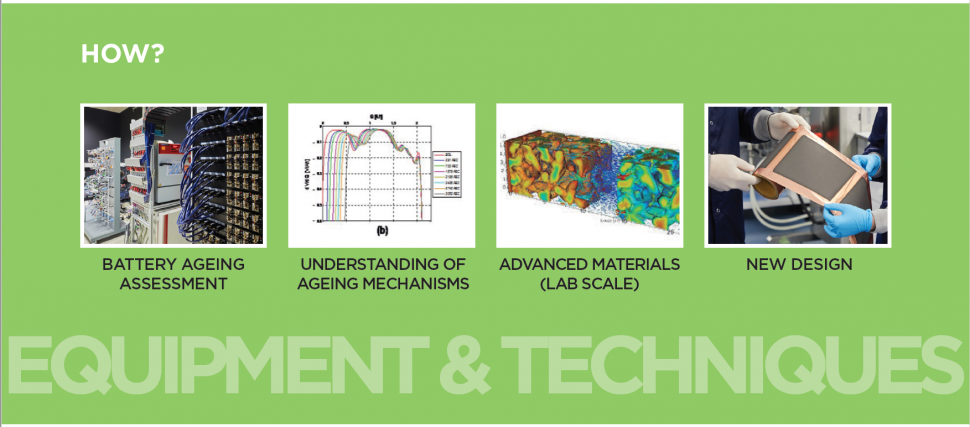Battery ante-mortem and post-mortem analysis provide information about “the black box”: this is how the cells were constructed, the materials that compose them, the manufacturing process. In storage systems, this represents relevant information that helps to understand the behavior of the system from “cradle to grave,” closing the loop for decision-makers. A battery post-mortem study at the material science level offers invaluable information about the type of operation and the quality of control and monitoring of the cell that it has undergone during its life. In fact, battery ante-mortem and post-mortem comparative studies represent a step forward to generate advanced modeling tools to enhance their performance as much as possible.
This aging behavior depends on a wide range of parameters (e.g. state of charge-SOC, state of health-SOH, depth of discharge, charge/discharge rate, charge variability and temperature) closely link of the application condition that needs to be studied in order to better understand the effects of different parameters on aging (including user behavior).
Post-mortem studies of batteries are a crucial element for companies engaged in the development of second-life batteries for the stationary sector. These studies offer an accurate analysis of the current state of the cell and the remaining lifetime. Likewise, CIC energiGUNE´s post-mortem services advise companies involved in the recycling of batteries and supercapacitors to take the best possible solution for the end of life of each of the elements that compose them.


If you want to know the latest trends in energy storage and new developments in research, subscribe.

If you want to join a top-level team, collaborate with specialists in multiple disciplines or tell us about your concerns, don't think twice...